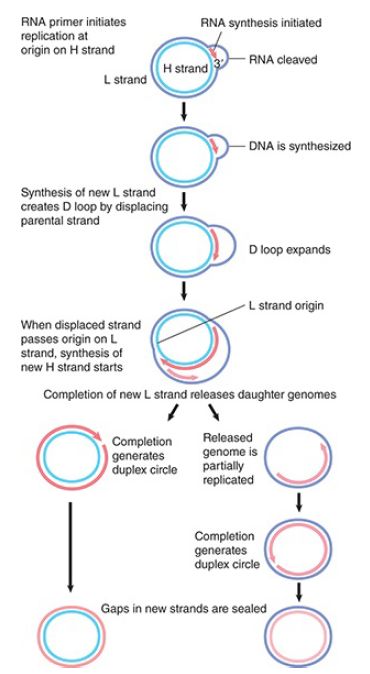

النبات

مواضيع عامة في علم النبات

الجذور - السيقان - الأوراق

النباتات الوعائية واللاوعائية

البذور (مغطاة البذور - عاريات البذور)

الطحالب

النباتات الطبية


الحيوان

مواضيع عامة في علم الحيوان

علم التشريح

التنوع الإحيائي

البايلوجيا الخلوية


الأحياء المجهرية

البكتيريا

الفطريات

الطفيليات

الفايروسات


علم الأمراض

الاورام

الامراض الوراثية

الامراض المناعية

الامراض المدارية

اضطرابات الدورة الدموية

مواضيع عامة في علم الامراض

الحشرات


التقانة الإحيائية

مواضيع عامة في التقانة الإحيائية


التقنية الحيوية المكروبية

التقنية الحيوية والميكروبات

الفعاليات الحيوية

وراثة الاحياء المجهرية

تصنيف الاحياء المجهرية

الاحياء المجهرية في الطبيعة

أيض الاجهاد

التقنية الحيوية والبيئة

التقنية الحيوية والطب

التقنية الحيوية والزراعة

التقنية الحيوية والصناعة

التقنية الحيوية والطاقة

البحار والطحالب الصغيرة

عزل البروتين

هندسة الجينات


التقنية الحياتية النانوية

مفاهيم التقنية الحيوية النانوية

التراكيب النانوية والمجاهر المستخدمة في رؤيتها

تصنيع وتخليق المواد النانوية

تطبيقات التقنية النانوية والحيوية النانوية

الرقائق والمتحسسات الحيوية

المصفوفات المجهرية وحاسوب الدنا

اللقاحات

البيئة والتلوث


علم الأجنة

اعضاء التكاثر وتشكل الاعراس

الاخصاب

التشطر

العصيبة وتشكل الجسيدات

تشكل اللواحق الجنينية

تكون المعيدة وظهور الطبقات الجنينية

مقدمة لعلم الاجنة


الأحياء الجزيئي

مواضيع عامة في الاحياء الجزيئي


علم وظائف الأعضاء


الغدد

مواضيع عامة في الغدد

الغدد الصم و هرموناتها

الجسم تحت السريري

الغدة النخامية

الغدة الكظرية

الغدة التناسلية

الغدة الدرقية والجار الدرقية

الغدة البنكرياسية

الغدة الصنوبرية

مواضيع عامة في علم وظائف الاعضاء

الخلية الحيوانية

الجهاز العصبي

أعضاء الحس

الجهاز العضلي

السوائل الجسمية

الجهاز الدوري والليمف

الجهاز التنفسي

الجهاز الهضمي

الجهاز البولي


المضادات الميكروبية

مواضيع عامة في المضادات الميكروبية

مضادات البكتيريا

مضادات الفطريات

مضادات الطفيليات

مضادات الفايروسات

علم الخلية

الوراثة

الأحياء العامة

المناعة

التحليلات المرضية

الكيمياء الحيوية

مواضيع متنوعة أخرى

الانزيمات
D Loops Maintain Mitochondrial Origins
المؤلف:
JOCELYN E. KREBS, ELLIOTT S. GOLDSTEIN and STEPHEN T. KILPATRICK
المصدر:
LEWIN’S GENES XII
الجزء والصفحة:
10-4-2021
5005
D Loops Maintain Mitochondrial Origins
KEY CONCEPTS
- Mitochondria use different origin sequences to initiate replication of each DNA strand.
- Replication of the H strand is initiated in a D loop.
- Replication of the L strand is initiated when its origin is exposed by the movement of the first replication fork.
The origins of replicons in both prokaryotic and eukaryotic chromosomes are static structures: They comprise sequences of DNA that are recognized in duplex form and used to initiate replication at the appropriate time. Initiation requires separating the DNA strands and commencing bidirectional DNA synthesis. A different type of arrangement is found in mitochondria.
Replication begins at a specific origin in the circular duplex DNA. Initially, though, only one of the two parental strands (the H strand in mammalian mitochondrial DNA) is used as a template for synthesis of a new strand. Synthesis proceeds for only a short distance, displacing the original partner (L) strand, which remains single-stranded, as illustrated in FIGURE 1. The condition of this region gives rise to its name as the displacement loop, or D loop.

FIGURE 12.22 The D loop maintains an opening in mammalian mitochondrial DNA, which has separate origins for the replication of each strand.
DNA polymerases cannot initiate synthesis, but require a priming 3′ end (see the chapter DNA Replication). Replication at the H-strand origin is initiated when RNA polymerase transcribes a primer. The 3′ ends are generated in the primer by an endonuclease that cleaves the DNA–RNA hybrid at several discrete sites. The endonuclease is specific for the triple structure of DNA–RNA hybrid plus the displaced DNA single strand. The 3′ end is then extended into DNA by the DNA polymerase.
A single D loop is found as an opening of 500 to 600 bases in mammalian mitochondria. The short strand that maintains the D loop is unstable and turns over; it is frequently degraded and resynthesized to maintain the opening of the duplex at this site.
Some mitochondrial DNAs possess several D loops, reflecting the use of multiple origins. The same mechanism is employed in chloroplast DNA, where (in complex plants) there are two D loops. To replicate mammalian mitochondrial DNA, the short strand in the D loop is extended. The displaced region of the original L strand becomes longer, expanding the D loop. This expansion continues until it reaches a point about two-thirds of the way around the circle. Replication of this region exposes an origin in the displaced L strand. Synthesis of an H strand initiates at this site, which is used by a special primase that synthesizes a short RNA. The RNA is then extended by DNA polymerase, proceeding around the displaced single-stranded L template in the opposite direction from L-strand synthesis.
As a result of the lag in its start, H-strand synthesis has proceeded only a third of the way around the circle when L-strand synthesis finishes. This releases one completed duplex circle and one gapped circle, the latter of which remains partially single-stranded until synthesis of the H strand is completed. Finally, the new strands are sealed to become covalently intact.
The existence of D loops exposes a general principle: An origin can be a sequence of DNA that serves to initiate DNA synthesis using one strand as a template. The opening of the duplex does
not necessarily lead to the initiation of replication on the other strand. In the case of mitochondrial DNA replication, the origins for replicating the complementary strands lie at different locations. Origins that sponsor replication of only one strand are also found in the rolling circle mode of replication .
 الاكثر قراءة في مواضيع عامة في الاحياء الجزيئي
الاكثر قراءة في مواضيع عامة في الاحياء الجزيئي
 اخر الاخبار
اخر الاخبار
اخبار العتبة العباسية المقدسة

الآخبار الصحية















 قسم الشؤون الفكرية يصدر كتاباً يوثق تاريخ السدانة في العتبة العباسية المقدسة
قسم الشؤون الفكرية يصدر كتاباً يوثق تاريخ السدانة في العتبة العباسية المقدسة "المهمة".. إصدار قصصي يوثّق القصص الفائزة في مسابقة فتوى الدفاع المقدسة للقصة القصيرة
"المهمة".. إصدار قصصي يوثّق القصص الفائزة في مسابقة فتوى الدفاع المقدسة للقصة القصيرة (نوافذ).. إصدار أدبي يوثق القصص الفائزة في مسابقة الإمام العسكري (عليه السلام)
(نوافذ).. إصدار أدبي يوثق القصص الفائزة في مسابقة الإمام العسكري (عليه السلام)


















